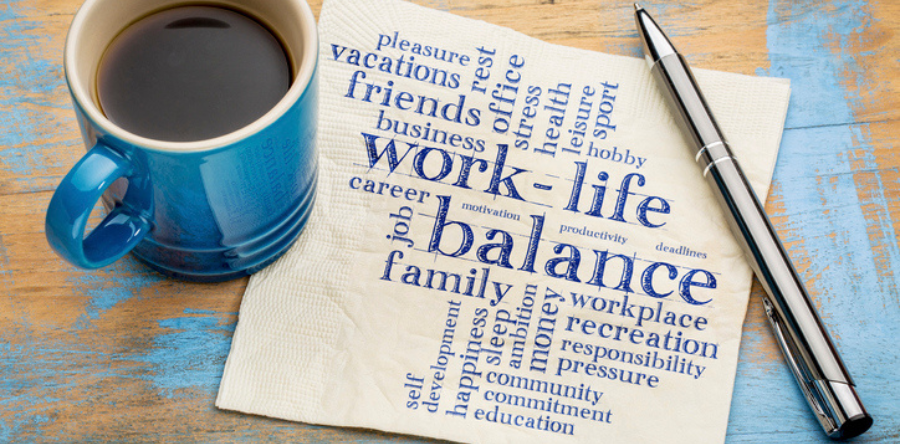When you think back on your career, do you feel that the people and organizations you worked for valued you as a whole person? That they cared about your overall health and wellbeing, any stress you felt at home or work, and they wanted to protect your physical and psychological safety?
At Valuing the Whole Person: A Psychological Safety & Wellbeing Summit hosted by the National Safety Council, DEKRA, and Workplace Safety & Prevention Services over 100 executives, researchers, experts, and advocates from organizations across North America explored how leaders can move the concepts of psychological safety and valuing the whole person from theory into action.
Why Do Psychological Safety and Wellbeing Matter?
Lorraine Martin, President and CEO of the National Safety Council, highlighted the importance of the event by pointing out, “We can’t look at traditional safety issues without looking at the other factors that affect our ability to be safe.”
Participants agreed to use organizational behaviour scholar and “father of employee engagement” William Khan’s definition of psychological safety for the purpose of the conversations, which is “The ability to show and be one’s self without fear of negative consequences.”
Panelists and keynote speakers explored many facets of this topic. We’ve compiled a list of 35 tips and insights that were shared, broken down by session. In the interest of brevity, we provided a link to the full list of sessions, facilitators and panelists instead of including them in this post.
[Note: This post is just a teaser. In April, a white paper with a summary of each keynote and panel discussion will be available on this website.]
Psychological Safety 101 – This session clarified what psychological safety is and is not, its importance in creating a sustainable culture, and strategies for implementation.
- Teach people at all levels of the organization how to have meaningful conversations where both parties leave with something new. (Show them how to have the conversation and how it will feel.)
- Start a self-awareness journal to spot cognitive biases and evaluate the level of psychological safety that you and those around you feel.
- Pay attention to the pace of work and stop managing by numbers.
- Control stress and urgency in the organization and recognize small wins.
The Leader’s Role – In this discussion, business leaders talked about the role of leaders in creating and sustaining psychologically safe workplaces.
- Invest in education and training.
- Listen to what is causing stress and provide enhanced support and education if needed.
- Watch for signs of burnout and crisis.
- Be authentic, build trust and listen.
- Encourage people to get involved.
Q&A with Dr. I David Daniels –In this one-on-one conversation, Dr. Daniels shared his experience in creating psychologically safe workplaces, moving research into action, and how diversity, equity, and inclusion intersect with psychological safety.
- People in positions of authority must commit to making a difference.
- You can’t eliminate psychosocial hazards. It’s about how you navigate intersections of difference.
- Generations are different, but difference doesn’t mean deficit.
- Be the person with the new idea and creativity. Someone must be the tip of the spear.
- Get to know yourself and look for allies and accomplices.
Wellbeing, Mental Health, Stress & Resilience – The facilitator and panelists in this session explored the link between employees’ mental health, wellness, resilience, and organizational sustainability and success.
- Caring for the whole person requires an integral approach that includes physical, mental, emotional, and spiritual health.
- Creating a healthy, inclusive, and diverse work environment that fosters a sense of connection and belonging requires a multi-pronged, collaborative approach.
- Leadership commitment is the number one driver of success.
- Give people tools to feel safe and to have agency over their mental health.
- Create conditions for relaxation and rejuvenation to address chronic stress and avoid burnout.
Diversity, Equity, and Inclusion (DEI) – In this robust conversation, the facilitator and panelists discussed the connection between DEI and psychological safety.
- These issues carry a lot of baggage. The simpler we make them, the more effective we’ll be at educating and shifting culture.
- Pay attention to and catch reactive emotions early.
- Let go of old ways of thinking.
- Take care of personal psychological safety and surround yourself with people who support you.
- Remember people have stuff going on. It’s not always about you.
Closing Keynote: Valuing the Whole Person – In her closing remarks, Dr. Robyne Hanley-Dafoe talked to participants about moving commitment to psychological safety, resilience, and stress reduction into action and daily practice and shared this list of Leader Reflection Prompts.
- Am I doing the right thing for the right reason?
- When people walk away from me, is potential activated or depleted?
- Did I say thank you?
- Have I celebrated the wins of the team?
- Do I know, overall, how my team is feeling?
- Have I checked in with everyone?
- Have I been inclusive and expanded my interactions to include the whole team?
- Am I making decisions and acting with my heart and head in equal measure?
- Do I see any red flags?
- Do I need to call in support for anyone?
It’s about starting the conversation
The panelists were open about their experiences and lessons learned so far, but it was widely agreed that this is new territory for most. There are still a lot of misconceptions about what we mean by psychological safety and valuing the whole person.
Dr. Steven Simon, President and Founder of Culture Change Consultants Inc., likened this journey to the one he experienced when he introduced the concept of safety culture. “Its time has come, but there are still barriers at every level.” At this stage, he says there is still the need to explain why it matters, what the results are, and the impact psychological safety can have on individuals and workplaces.
With this in mind, it’s fitting to wrap up our list of tips with this one:
- Don’t be daunted by the topic of psychological safety. “It’s a journey. You’re not alone. There are a lot of tools and resources. It’s just about starting the conversation.”

 Fresh Communications in collaboration with WSPS
Fresh Communications in collaboration with WSPS



